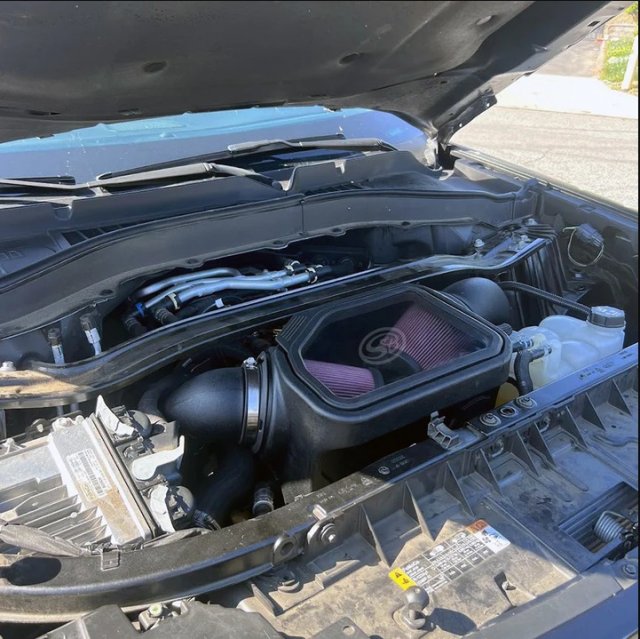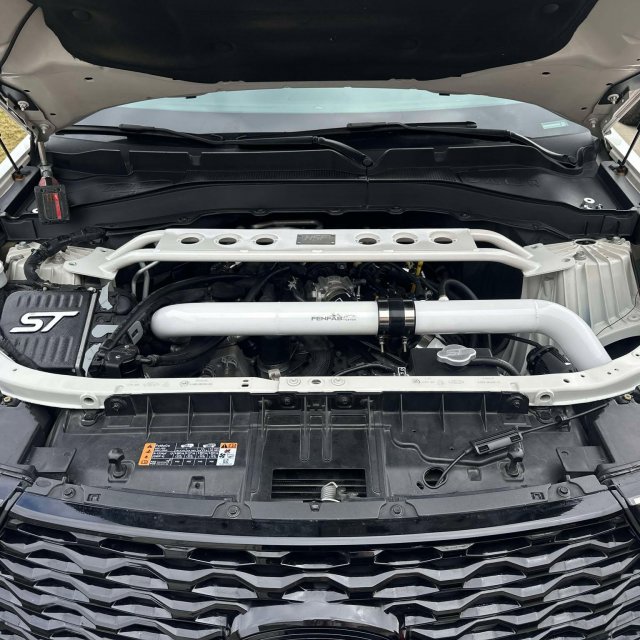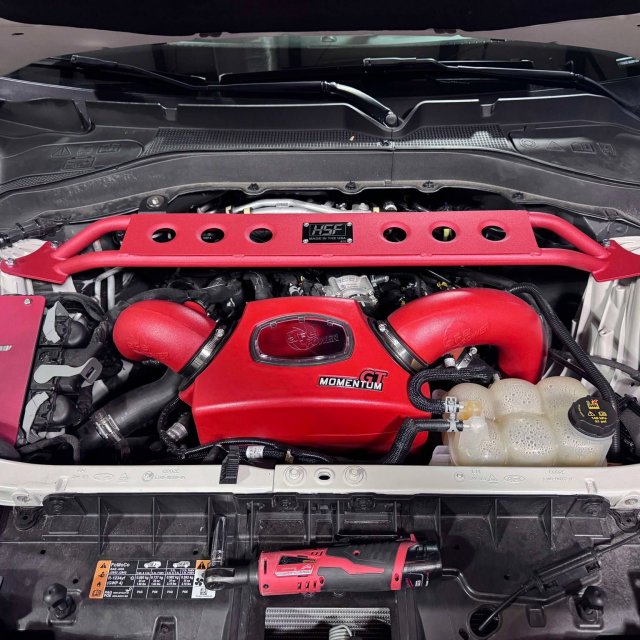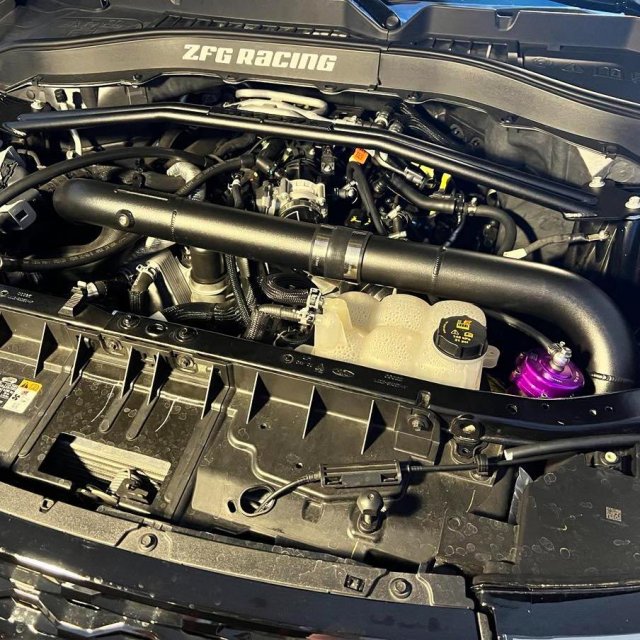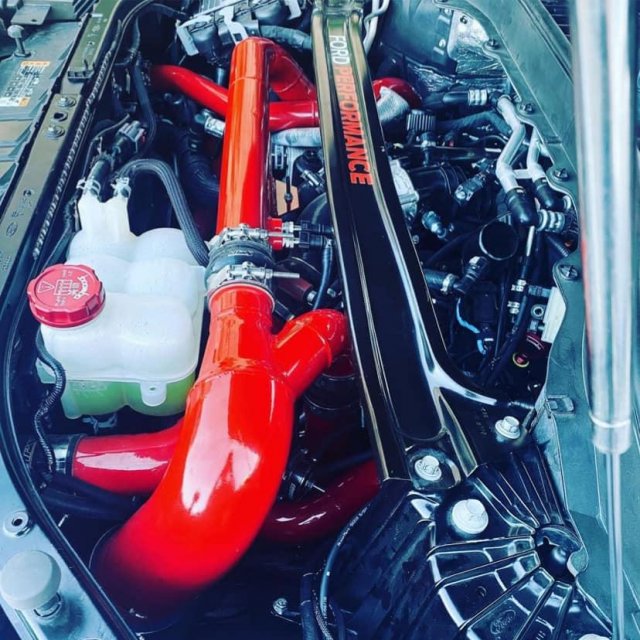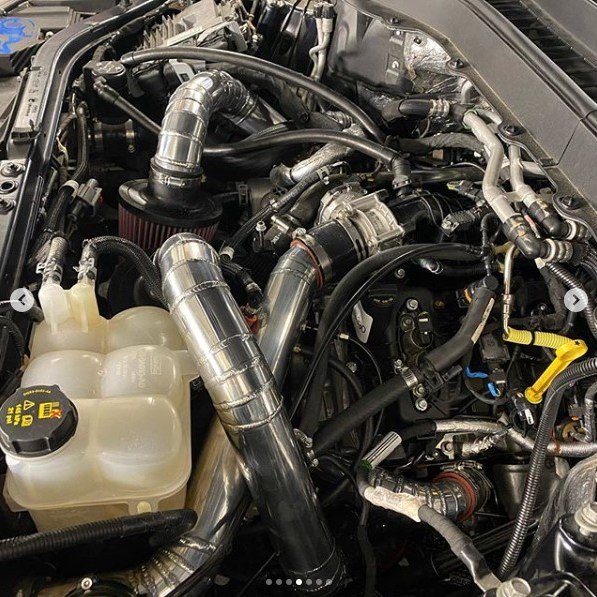Let's Discuss Intakes!
Over the years, we've seen significant advancements in intake systems, all of which we have tested. These include Theo’s custom-built intake (the first Explorer to feature one), Darren’s custom VooDoo intake, FenFab v1, AFE, S&B, K&N and more! Thanks to HP Tuners, we've collected 1000s of high-quality data logs from hundreds of Explorers with various intake configurations. Despite this wealth of data, some individuals continue to claim that intakes make no difference and don’t yield any power gains. This is simply a false statement and a misunderstanding of the engineering principles behind turbochargers and centrifugal compressors. We at ZFG racing have participated in several turbo development projects with companies like Garrett where we have tested their turbos in multiple configurations with pre turbo pressure and turbo speed data being collected! This data was fantastic to have on projects like the GEN 2 3.5l raptor and a few future platforms that are to be released soon! It’s also worth noting that while this post specifically applies to Explorer the same concepts can be applied to other platforms like the F150s and ranger raptors. In fact on the Ranger Raptor we saw the highest gains I’ve ever seen as a result of adding an intake! Over 35 rwhp on 93 octane!
Will an intake make a difference without a tune on your Explorer ST?
In short, no—but with a few caveats. The Explorer uses a torque-based strategy, which in short defines the amount of air needed to achieve the desired torque. As a result, any change made to the intake system may not yield significant effects, as the vehicle will adjust to maintain the same air load regardless of the intake configuration. However, there can be slight improvements in efficiency that may result in minor power gains. “but afe shows a dyno chart of before and after with gains allover” well those are “real” gains but not really because it’s gaining power at the same airflow but because now wg duty model is slightly off and the car is actually slightly over target on boost.
Will the Intake Make a Difference with a Tune?
It’s possible! The impact of an intake depends on the tune and where the vehicle is operating on the compressor map. If you're using a standard daily driver tune and the vehicle is within the middle of the compressor map, you’re unlikely to see substantial gains without changes to the tune. The same principle applies as mentioned earlier. However, if you're running a performance tune, especially one near the edge of the compressor map, you’ll begin to see noticeable gains when combined with an optimized intake setup.
How Do Intakes Add Power?
While marketing materials often claim that intakes simply allow more air to be sucked in, the reality is much more complicated. In a turbocharged engine, on of the most critical factor is the air pressure in front of the turbo. When using a stock intake system, the turbo creates a vacuum within the intake pipes, which negatively impacts the pressure ratio. For example, if you're running 22 psi of boost (36.5 psia) with no intake and the turbo inlet just sitting in good sea level air, your pressure ratio is 36.5/14.5 = 2.52. When using a stock intake, the pre Turbo intake pipes may be at 11 psia at peak airflow around 6,000 rpm, causing the pressure ratio to rise to 3.3, which puts the compressor in a less efficient operating range or overspeed completely off the compressor.
An aftermarket intake might raise the pre-turbo pressure to 13.5 psia, reducing the pressure ratio to 2.7—significantly improving the compressor's efficiency. This shift can be the difference between operating within the compressor's optimal range and pushing it beyond its limits.
This phenomenon is also why turbocharged engines lose power at higher altitudes. In Denver, for example, the atmospheric pressure is 12.4 psia vs 14.5 at sea level, which already puts the system at a disadvantage, put a stock intake in front of that and you can see as much as 10lbn/min reduction in airflow at that altitude compared to a stock intake at sea level.
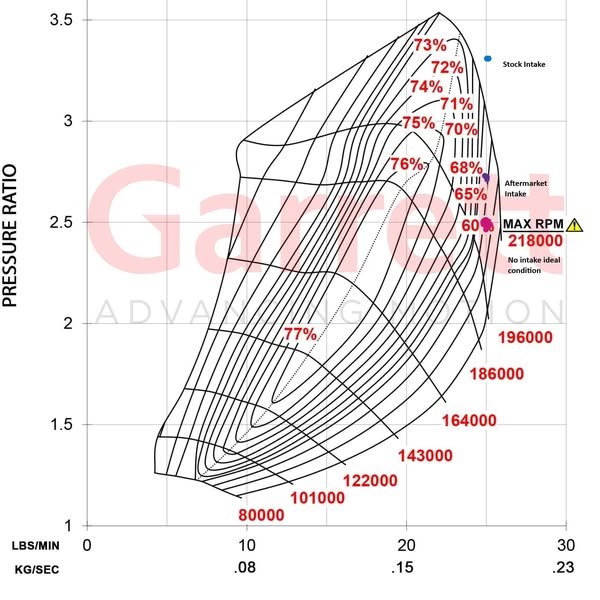
Why Not Just Put the Filter Directly on the Turbo or Skip the Intake Entirely?
There’s a reason turbo race cars often don't use an intake system or filter, but there’s also a reason why street cars do. The Explorer ST, much like our competition, has an engine bay full of hot air and sucking in air from this environment can be counterproductive. The hotter the air, the less dense it becomes. As a result, 22 psi of boost at 150°F is much less effective than 22 psi at 70°F. Hotter air contains less mass, and therefore, less mass means less power.
When Do I Need an Intake?
The short answer: whenever you want one! Even if you’re not pushing your turbo to its limits, an upgraded intake still offers benefits. There is the obvious look and sound of an intake that is a benefit but also there is an increase in efficiency. Less pre turbo vacuum means a lower pressure ratio and lower shaft speed which creates more efficient creation of pressurized air. This increase in efficiency does net small gains in power and it also helps prevent heat soak over time. The more efficient the operating zone of the compressor, the less heat it generates in the charge air and the less work the intercooler has to do to cool the charge back down.
Which Intake Does ZFG Racing Recommend?
We’re fortunate to have gathered data from 100s of vehicles equipped with every intake available on the market—along with some custom intakes not sold commercially. Unlike many others who base recommendations on a single dyno result, our suggestions are grounded in 1000s of data logs collected from a variety of cars. Thanks to HP Tuners, we can monitor over 90 data channels for each vehicle we tune, allowing us to make data-driven decisions.
Currently, our top recommendation is the FenFab V2 intake. It provides exceptional airflow and delivers the best results for those seeking the highest performance. Following that, the S&B intake with oiled filters offers excellent flow and a more subdued, stock-like appearance, making it a great option for those who prioritize a quieter operation while still benefiting from increased efficiency.
Over the years, we've seen significant advancements in intake systems, all of which we have tested. These include Theo’s custom-built intake (the first Explorer to feature one), Darren’s custom VooDoo intake, FenFab v1, AFE, S&B, K&N and more! Thanks to HP Tuners, we've collected 1000s of high-quality data logs from hundreds of Explorers with various intake configurations. Despite this wealth of data, some individuals continue to claim that intakes make no difference and don’t yield any power gains. This is simply a false statement and a misunderstanding of the engineering principles behind turbochargers and centrifugal compressors. We at ZFG racing have participated in several turbo development projects with companies like Garrett where we have tested their turbos in multiple configurations with pre turbo pressure and turbo speed data being collected! This data was fantastic to have on projects like the GEN 2 3.5l raptor and a few future platforms that are to be released soon! It’s also worth noting that while this post specifically applies to Explorer the same concepts can be applied to other platforms like the F150s and ranger raptors. In fact on the Ranger Raptor we saw the highest gains I’ve ever seen as a result of adding an intake! Over 35 rwhp on 93 octane!
Will an intake make a difference without a tune on your Explorer ST?
In short, no—but with a few caveats. The Explorer uses a torque-based strategy, which in short defines the amount of air needed to achieve the desired torque. As a result, any change made to the intake system may not yield significant effects, as the vehicle will adjust to maintain the same air load regardless of the intake configuration. However, there can be slight improvements in efficiency that may result in minor power gains. “but afe shows a dyno chart of before and after with gains allover” well those are “real” gains but not really because it’s gaining power at the same airflow but because now wg duty model is slightly off and the car is actually slightly over target on boost.
Will the Intake Make a Difference with a Tune?
It’s possible! The impact of an intake depends on the tune and where the vehicle is operating on the compressor map. If you're using a standard daily driver tune and the vehicle is within the middle of the compressor map, you’re unlikely to see substantial gains without changes to the tune. The same principle applies as mentioned earlier. However, if you're running a performance tune, especially one near the edge of the compressor map, you’ll begin to see noticeable gains when combined with an optimized intake setup.
How Do Intakes Add Power?
While marketing materials often claim that intakes simply allow more air to be sucked in, the reality is much more complicated. In a turbocharged engine, on of the most critical factor is the air pressure in front of the turbo. When using a stock intake system, the turbo creates a vacuum within the intake pipes, which negatively impacts the pressure ratio. For example, if you're running 22 psi of boost (36.5 psia) with no intake and the turbo inlet just sitting in good sea level air, your pressure ratio is 36.5/14.5 = 2.52. When using a stock intake, the pre Turbo intake pipes may be at 11 psia at peak airflow around 6,000 rpm, causing the pressure ratio to rise to 3.3, which puts the compressor in a less efficient operating range or overspeed completely off the compressor.
An aftermarket intake might raise the pre-turbo pressure to 13.5 psia, reducing the pressure ratio to 2.7—significantly improving the compressor's efficiency. This shift can be the difference between operating within the compressor's optimal range and pushing it beyond its limits.
This phenomenon is also why turbocharged engines lose power at higher altitudes. In Denver, for example, the atmospheric pressure is 12.4 psia vs 14.5 at sea level, which already puts the system at a disadvantage, put a stock intake in front of that and you can see as much as 10lbn/min reduction in airflow at that altitude compared to a stock intake at sea level.

Why Not Just Put the Filter Directly on the Turbo or Skip the Intake Entirely?
There’s a reason turbo race cars often don't use an intake system or filter, but there’s also a reason why street cars do. The Explorer ST, much like our competition, has an engine bay full of hot air and sucking in air from this environment can be counterproductive. The hotter the air, the less dense it becomes. As a result, 22 psi of boost at 150°F is much less effective than 22 psi at 70°F. Hotter air contains less mass, and therefore, less mass means less power.
When Do I Need an Intake?
The short answer: whenever you want one! Even if you’re not pushing your turbo to its limits, an upgraded intake still offers benefits. There is the obvious look and sound of an intake that is a benefit but also there is an increase in efficiency. Less pre turbo vacuum means a lower pressure ratio and lower shaft speed which creates more efficient creation of pressurized air. This increase in efficiency does net small gains in power and it also helps prevent heat soak over time. The more efficient the operating zone of the compressor, the less heat it generates in the charge air and the less work the intercooler has to do to cool the charge back down.
Which Intake Does ZFG Racing Recommend?
We’re fortunate to have gathered data from 100s of vehicles equipped with every intake available on the market—along with some custom intakes not sold commercially. Unlike many others who base recommendations on a single dyno result, our suggestions are grounded in 1000s of data logs collected from a variety of cars. Thanks to HP Tuners, we can monitor over 90 data channels for each vehicle we tune, allowing us to make data-driven decisions.
Currently, our top recommendation is the FenFab V2 intake. It provides exceptional airflow and delivers the best results for those seeking the highest performance. Following that, the S&B intake with oiled filters offers excellent flow and a more subdued, stock-like appearance, making it a great option for those who prioritize a quieter operation while still benefiting from increased efficiency.
Attachments
-
168.9 KB Views: 63
-
287.3 KB Views: 66
-
342.9 KB Views: 61
-
170.9 KB Views: 61
-
110.9 KB Views: 60
-
127.8 KB Views: 60
-
8
- Show All

